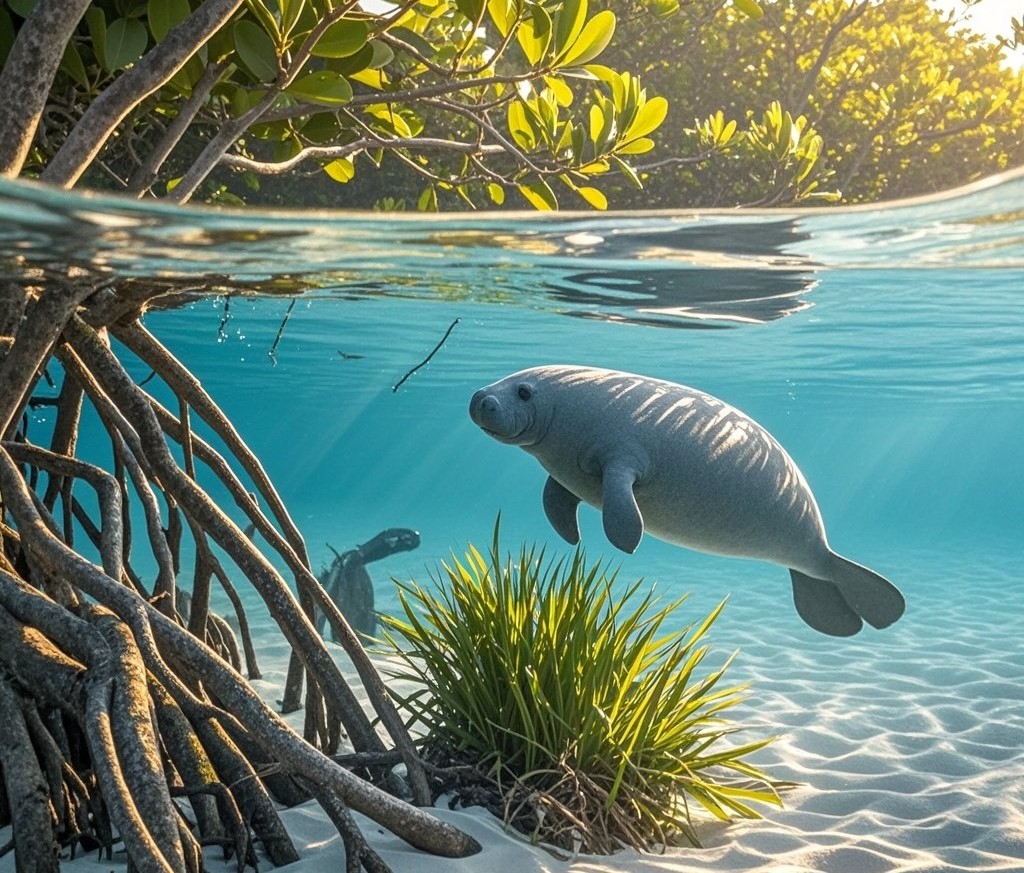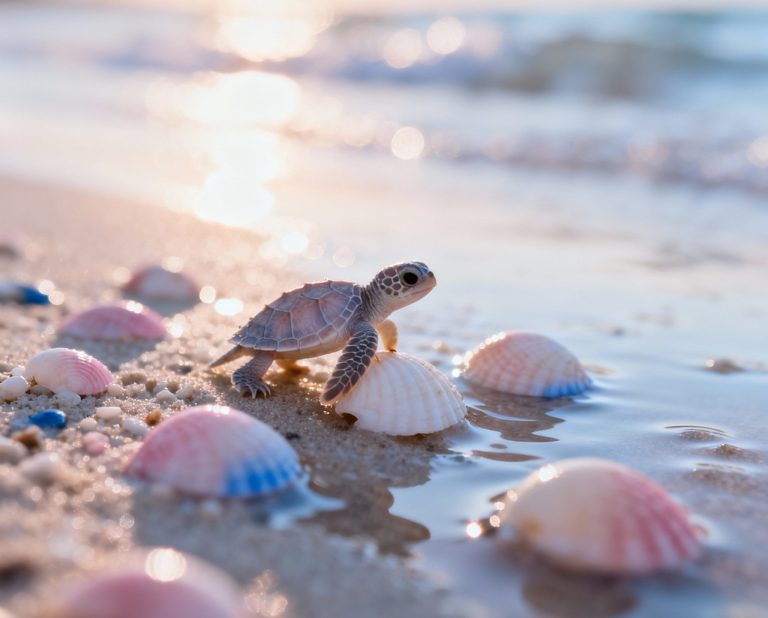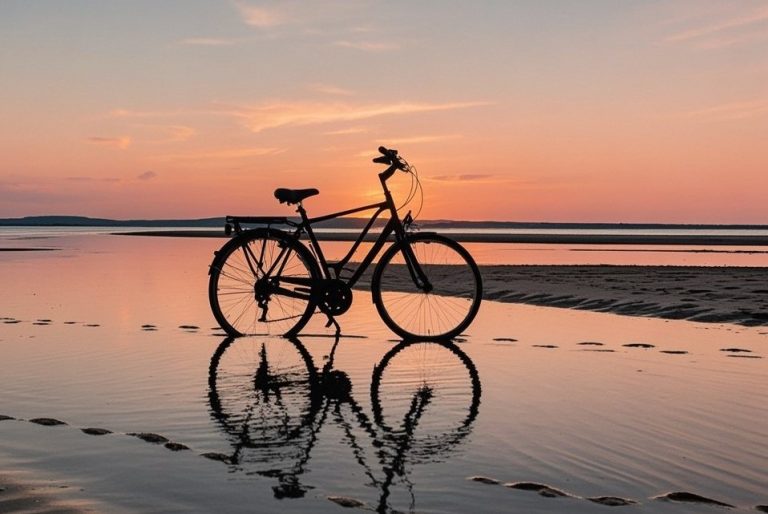Sanibel’s manatees drift slowly through calm waters—gentle, curious, and full of quiet wonder. Want to know where to spot them …
Manatees glide like gentle boulders through Sanibel’s warm bays. FWC: manatees prefer warm, shallow waters. Source: FWC. I once saw one surface beside my kayak—huge but calm.
FWC: they eat seagrass and help keep bays healthy. Source: FWC. Best for wildlife watchers; learn exact spots and simple tips—read on.
Sanibel’s Manatee Hotspots
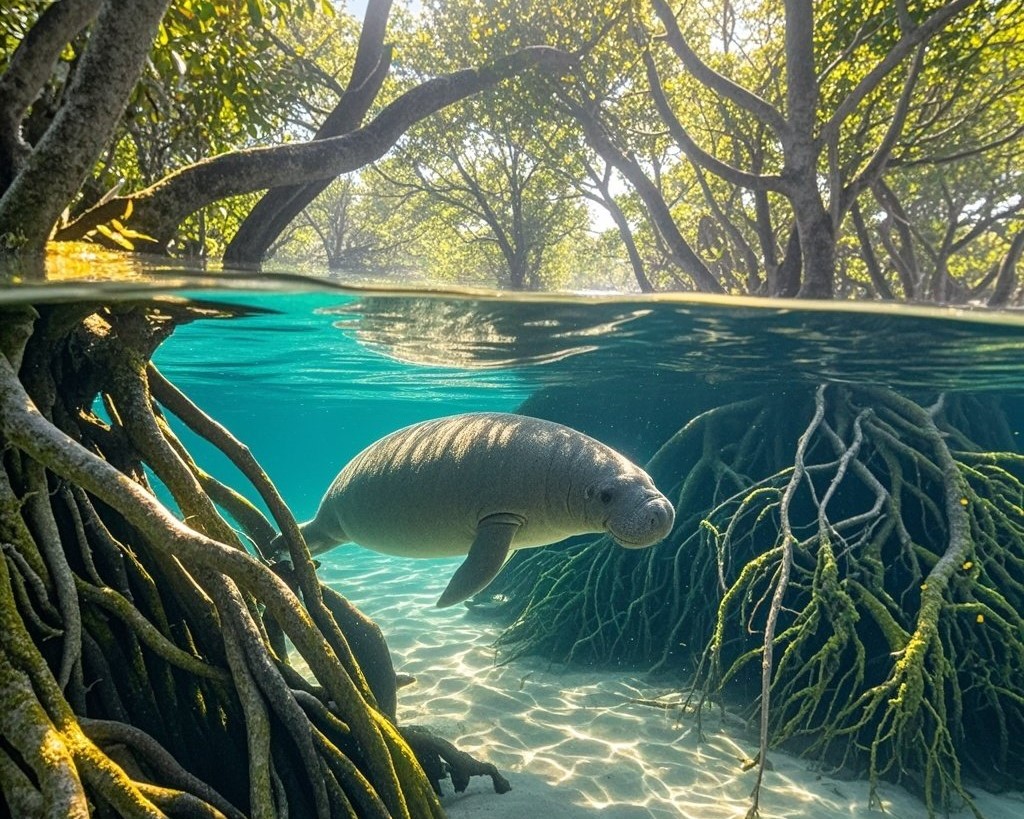
Manatees gather where water is warm and shallow, like slow-moving gardens of seagrass. Look in calm bays, quiet marinas, and the sheltered channels of Tarpon Bay. I once paddled a kayak and a gentle nose popped up two boat-lengths away—huge, calm, curious. That quiet nudge felt like a small, marine hello.
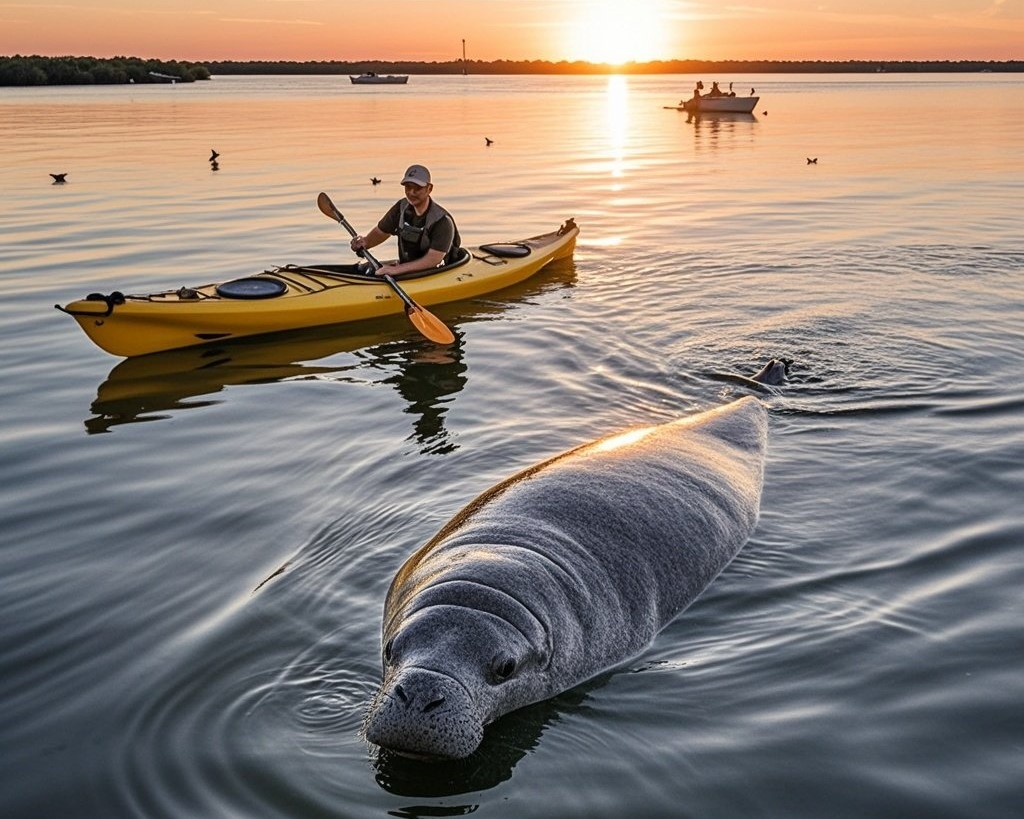
Hotspots
- Tarpon Bay — shallow seagrass beds; turtles and manatees feed here. Best: early morning.
- Lighthouse Canal — quiet channel near the lighthouse; good for slow sightings. Best: late morning.
- Sanibel Marina & Boat Docks — calm slips where manatees sometimes rest. Best: high tide.
- J.N. “Ding” Darling waterways — protected estuary channels; brings close views on guided tours. Best: low wind days.
- Local canals & inlets — near mangroves; look for gentle breath bubbles. Best: warm days after cold snaps.
Simple safety note: Always keep a gentle distance. Manatees are protected; approach slowly and let them choose the meeting.
Manatee Trivia That Will Make You Smile
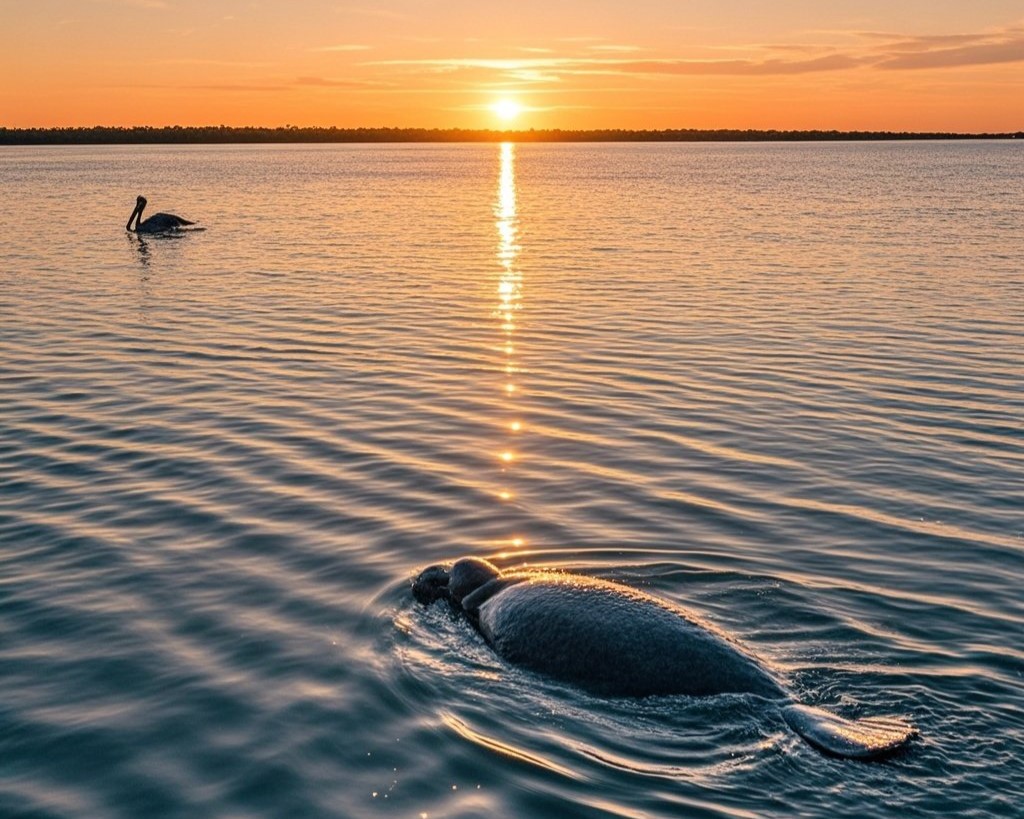
Manatees eat like slow underwater lawnmowers. They chew and chew—huge bites of seagrass all day. It feels silly and serious at once. I once watched one munch for ten quiet minutes; the water barely moved. Big animal. Gentle mover.
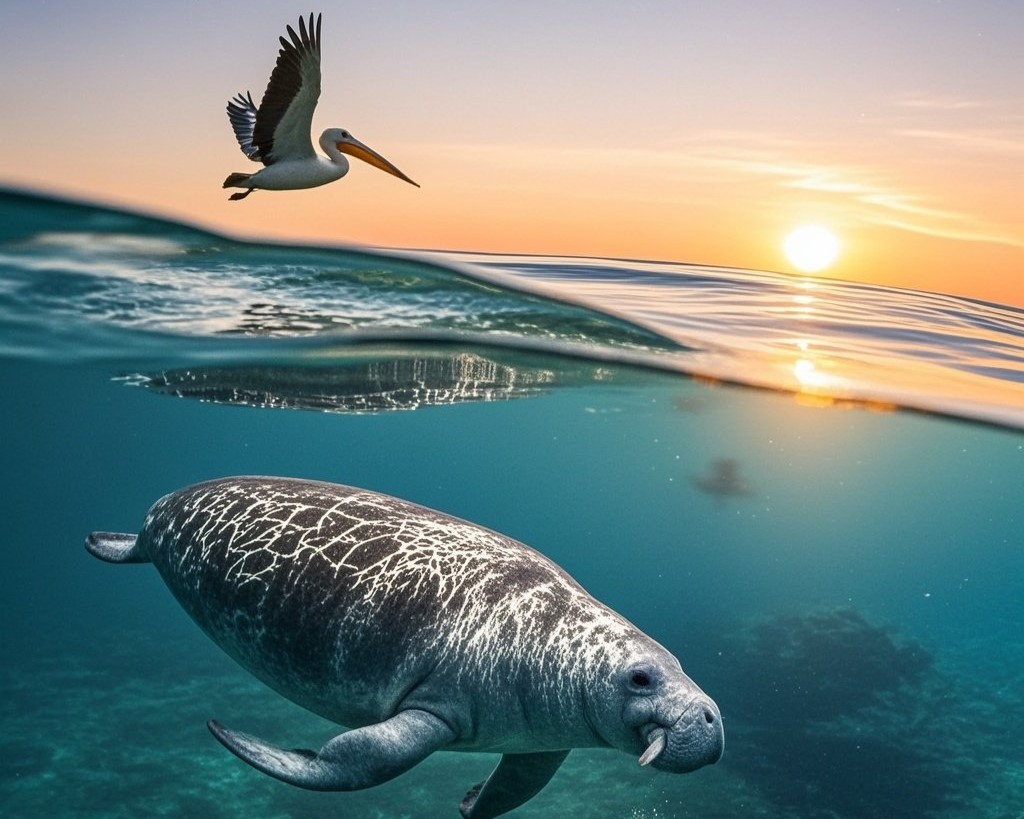
- Manatees eat ~100 lbs of plants a day. That’s a lot of salad.
- They can hold breath up to 20 minutes. Mostly they breathe every few minutes.
- Called “sea cows,” but related to elephants. Strange family tree!
- Seagrass gardens matter. Manatees keep those beds healthy for many other animals.
- Look for soft blows. A tiny puff on the surface often means a manatee is near.
Short note: keep a gentle distance. Let the manatee choose to approach. They are protected and should not be chased.
Why Gentle Giants Matter to Sanibel
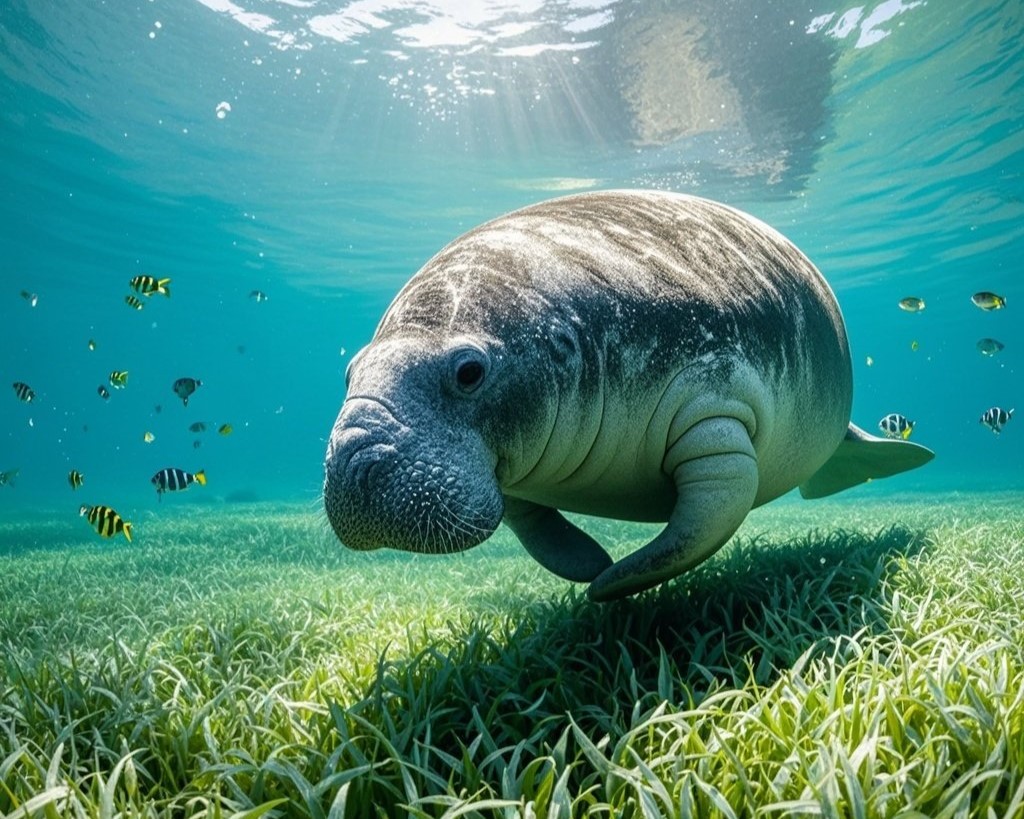
Manatees aren’t just cute. They carry Sanibel’s future in quiet ways. Every bite of seagrass they take keeps underwater meadows trimmed and alive. Those meadows are nurseries for baby fish, safe paths for sea turtles, and filters that keep the waters clear.
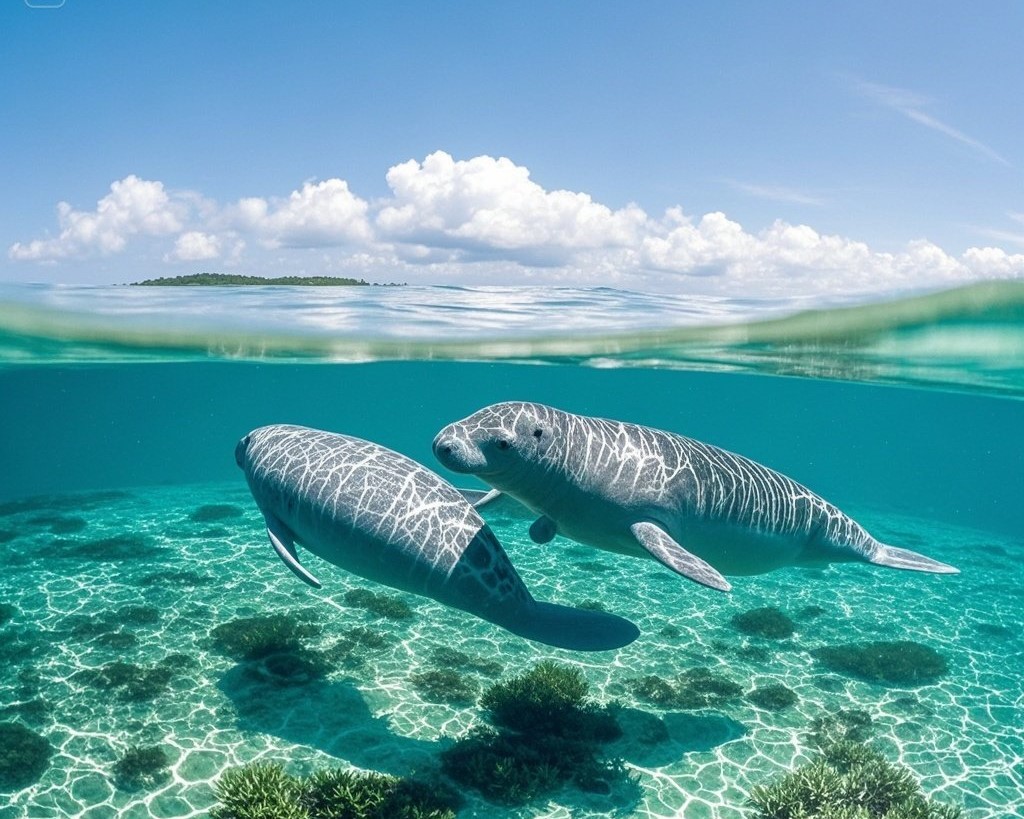
It feels like a simple circle: healthy manatees mean healthy seagrass. Healthy seagrass means healthy waters. And healthy waters are the heartbeat of Sanibel. Without the giants, the island loses more than a symbol. It loses balance.
To protect them is to protect the island’s future—its fish, its turtles, its waters, its peace. The manatee may move slowly, but its role is fastened tightly to Sanibel’s story.
Conclusion — Stay Close to Sanibel’s Gentle Giants
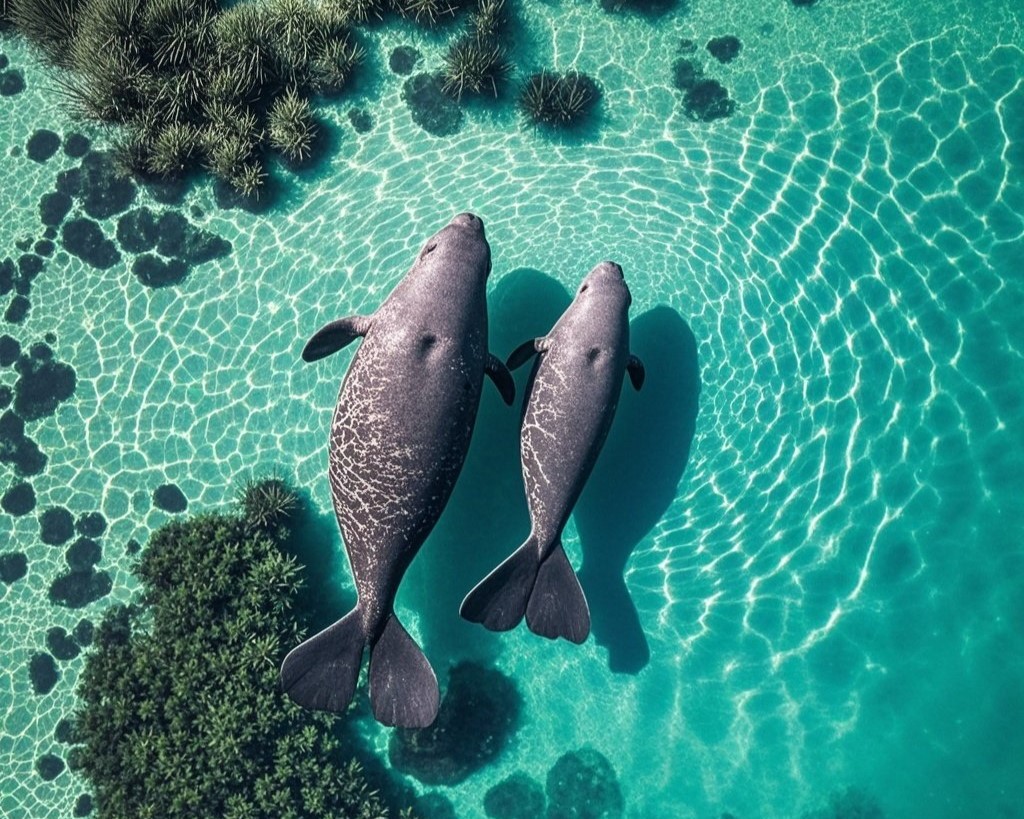
Sanibel’s manatees are gentle, curious, and full of quiet wonder. From their favorite hangouts in canals and shallow waters, to surprising facts like holding their breath for 20 minutes or eating 100 lbs of plants daily, these gentle giants show us the magic of slow, mindful nature. Observing them connects you to Sanibel’s serene waters and reminds us why protecting them matters.
Want more wildlife secrets, quiet corners, and local tips? 🌿 Sign up for the newsletter or visit SanibelIslandGo.com to explore guides, events, and insider experiences.
Thanks for visiting. May your next walk by the water bring you face to face with Sanibel’s gentle giants.

I’m Ayla Wolesky, and I’ve spent years exploring every corner of Sanibel Island. From its pristine beaches to the hidden gems only locals know about, I’m passionate about sharing everything this beautiful island has to offer. Whether it’s the best spots for shelling, the wildlife that makes Sanibel so special, or where to enjoy a perfect sunset, I’ve got you covered. My goal is to provide insider tips and up-to-date information that will help you experience Sanibel Island like never before.


